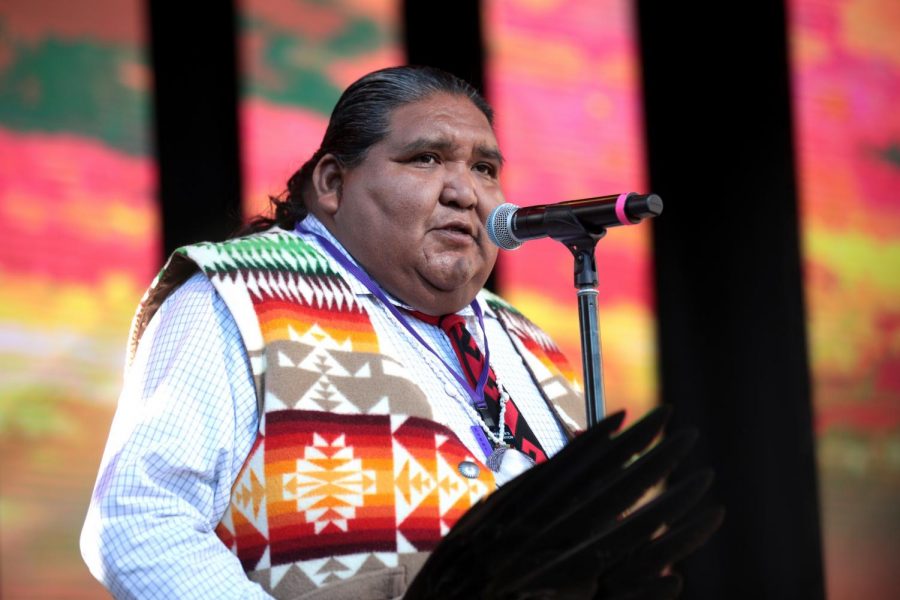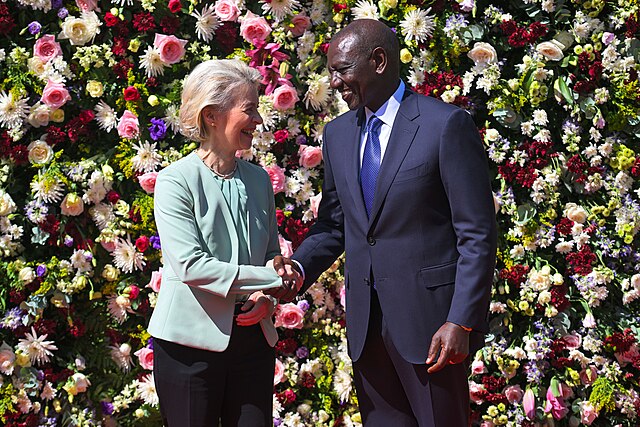As heated border wall debates continue, people are starting to take sides in a very clear way. Whether it’s futile Twitter rants or a simple conversation, many people have no issue declaring whether they are for the wall or against it. Though there is one group, who the wall will affect the most, that the everyday American doesn’t even know exists. The Tohono O’odham Indian Reservation is located right on the border, so what role do they play in this situation?
Yet again, a narrative older than America itself is resurrected. The clash between Native Americans and those who seek to invade their land is alive and well. After the Gadsden Purchase of 1854, the southern border was newly defined. This gave America a new opportunity to erect a deep southern route of the transcontinental railroad. Creating the border was a very important move for American westward expansion, but it literally cut the Tohono O’odham reservation in half. Basically, after the Gadsden Purchase, some tribe members found themselves living in Mexico, while their loved ones lived up north in the United States. Back then, it wasn’t a big issue and tribe members could roam between Mexico and the U.S. all day if they wanted to.
Nowadays, those who are members of the Tohono O’odham reservation must carry a tribal ID card and present it to federal agents in order to cross the border. The reservation has 74 miles of border land, and there are nine entry points across this area for tribal members to cross. Though some of that 74 miles is just barren desert, and anyone could just walk through. Granted, the Feds are always patrolling, but there have been instances of some Tohono O’odham people exploiting this region for crime.
In a CBS News docuseries titled “A Nation Divided,” former Tribal Council member and activist David Garcia describes how he sees the crime firsthand. “It happens on the reservation and there’s no secret about tribe members’ involvement in drug smuggling as well as migrant smuggling,” Garcia says. Unfortunately, the reservation is very impoverished and has become a hotspot for trafficking. It’s understandable that desperate people can act in desperate ways, but this type of exploitation can’t fly under the radar more than it already has. It’s not some made-up fantasy. These people see this happening every day and they say they want it to stop. But they don’t want a wall to be built.
Many reservation members have admitted to the cartel offering them deals in order to use their land. This mainly happens on the Mexican side of the border, but it also suggests that there are tribe members who have desperately accepted these partnerships, as well as those who’ve rejected them. Although a few tribe members have worked to combat drug smuggling in the area, why hasn’t the tribe done more to ensure that people stop this type of behavior? Concrete measures need to be taken.
So, here’s what we know: Nobody in the tribe wants their people to be unsafe, though nobody in the tribe wants a huge wall bisecting their sacred land. However, not much would change if a wall was built except the eyesore created by the wall itself. The people would still need to present their IDs, and the nine points of entry would still exist. So, what’s the big deal? The fact that the 74-mile border is being exploited as you’re reading this suggests that maybe there needs to be a solution. They haven’t suggested a better solution, but yet they resist the only proposed solution. It is a little peculiar that these people don’t want a wall separating their peaceful lifestyle from dangerous cartels in Mexico. The bottom line is, there is a concerning lack of logic throughout this whole situation.
Granted, religion makes this whole thing tricky. It would be extremely unacceptable for the U.S. government to completely deny any sort of religious practice that tribe members wish to pursue. According to the tribe’s Vice Chairman Verlon Jose, “Our place in life is to care for the land, to care for the animals and to live in harmony.” That sounds great and all, but when your people are becoming a little too harmonious with the local cartel, it might be time for a reality check. What it boils down to is people saying they want people safe, yet the wall is portrayed as some evil structure. This thing isn’t the Death Star, it’s just a wall that’s supposed to stop crime. Why is that evil? This is where you need to listen to firsthand accounts like that of the Tohono O’odham people. Instead of listening to your news station or whatever propaganda helps you sleep at night, it’s important to understand that these people live there. They see it, they live it. I think their word is far more important to take into account than anyone else’s.
At the same time, it’s unsettling that action isn’t taken to keep people safe. I’d love to see this wall go up. Thanks to the account of the Tohono O’odham people, it couldn’t be clearer to me. Maybe that’s because I don’t live on the border and I don’t have to deal with seeing a big ugly wall, but how many tribe members actually reside within eyesight of the southern border? I agree with the tribe in the sense that there is a problem on the border. I agree with them when they say that there needs to be a solution. Hopefully a plan can be formulated that would stop the crime, specifically on the reservation. Unless someone could propose an actual plan, it seems like the wall would be a viable solution. If the wall doesn’t get built, but the problem gets solved, that’s perfect, it’ll be a win-win situation. But it seems the wall might be answer in the case of the Tohono O’odham Nation.
Brendan Lally can be reached at [email protected].



















pete most • Jan 31, 2019 at 10:40 pm
Amy has a good point.. and really does anyone take the social justice warrior’s victim narrative seriously anymore?
Sometimes they raise serious points but it’s always undermined by their insincerity and ulterior motive.
amy • Jan 31, 2019 at 1:35 pm
What about the negative impact of illegal immigration on Asians, white americans and african-americans. The latter immigration legal and illegal greatly depresses the wages of an already poorly performing group that has the highest unemployment rates and lowest income.
Oh wait…. they aren’t part of the special victim class that aides the liberal argument that border security is ‘evil’ so too bad for those victims. .